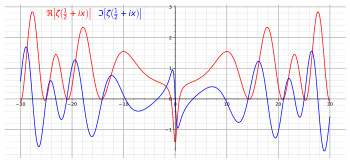
In mathematics, a conjecture is a conclusion or a proposition that is proffered on a tentative basis without proof.[1][2][3] Some conjectures, such as the Riemann hypothesis or Fermat's conjecture (now a theorem, proven in 1995 by Andrew Wiles), have shaped much of mathematical history as new areas of mathematics are developed in order to prove them.[4]
- ^ "Definition of CONJECTURE". www.merriam-webster.com. Retrieved 2019-11-12.
- ^ Oxford Dictionary of English (2010 ed.).
- ^ Schwartz, JL (1995). Shuttling between the particular and the general: reflections on the role of conjecture and hypothesis in the generation of knowledge in science and mathematics. Oxford University Press. p. 93. ISBN 9780195115772.
- ^ Weisstein, Eric W. "Fermat's Last Theorem". mathworld.wolfram.com. Retrieved 2019-11-12.